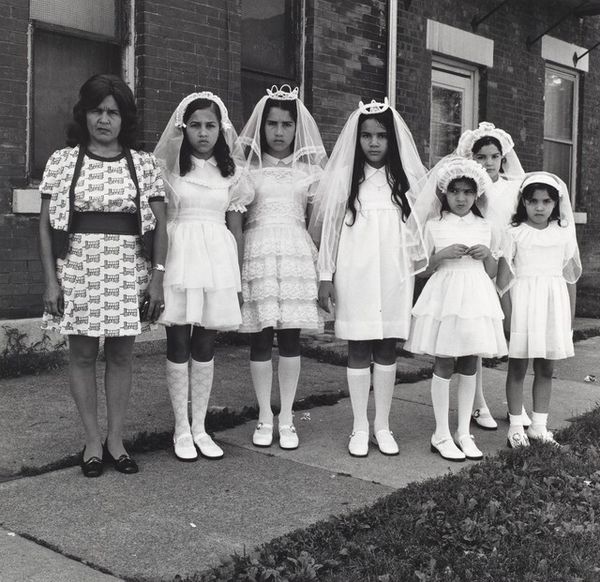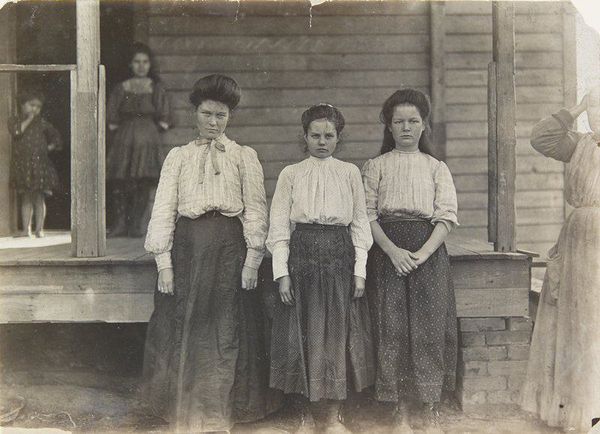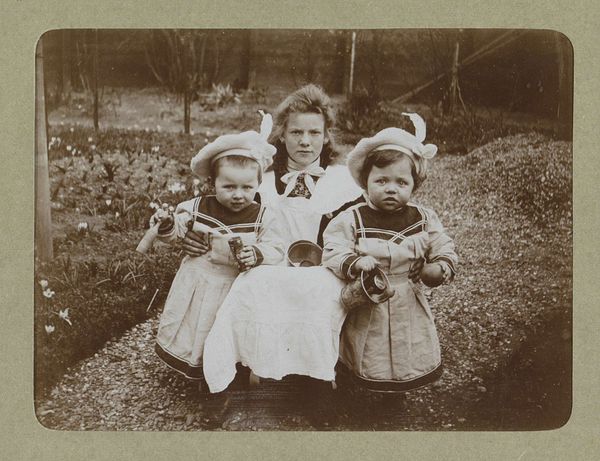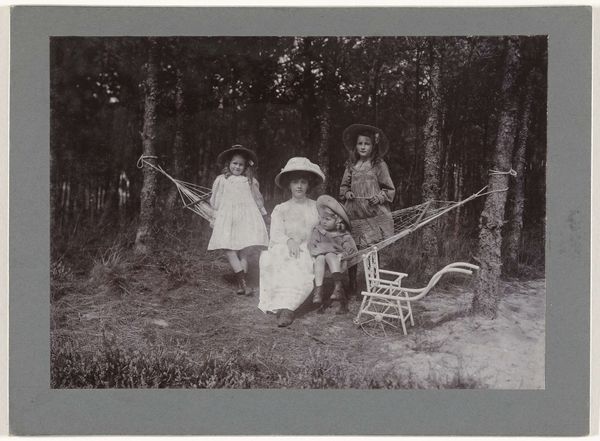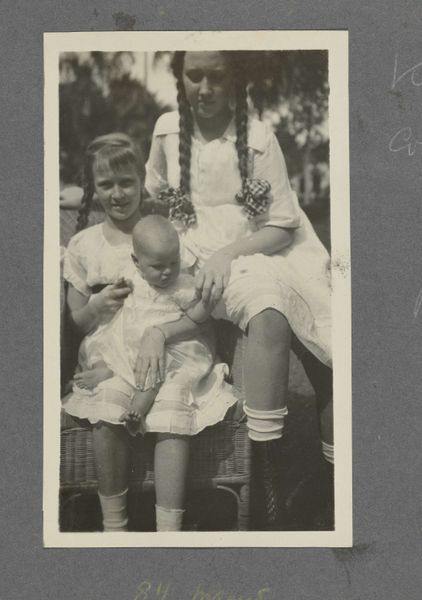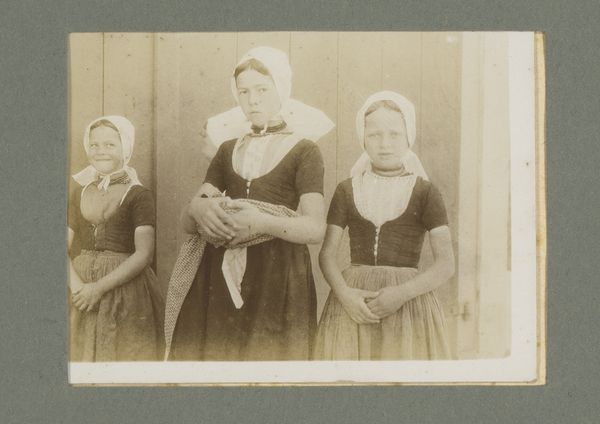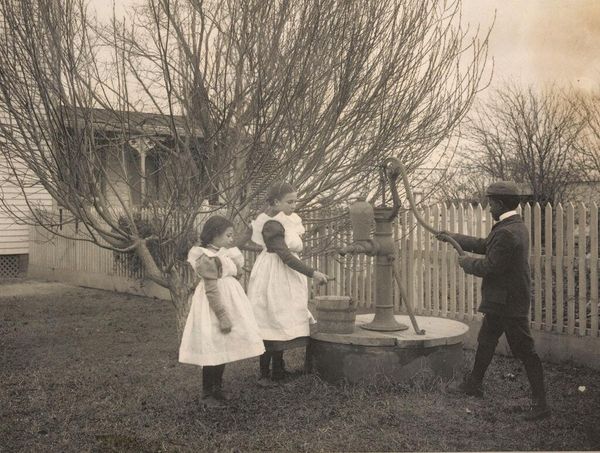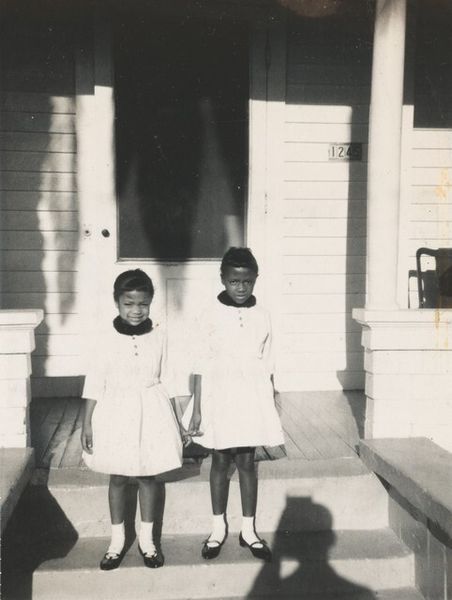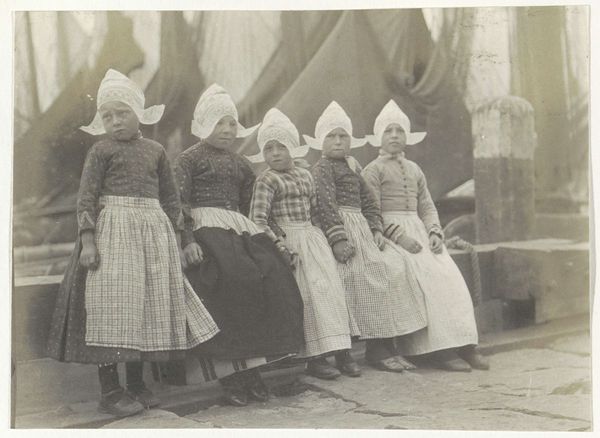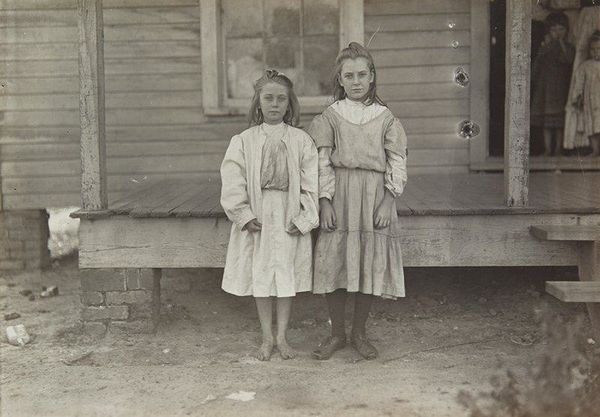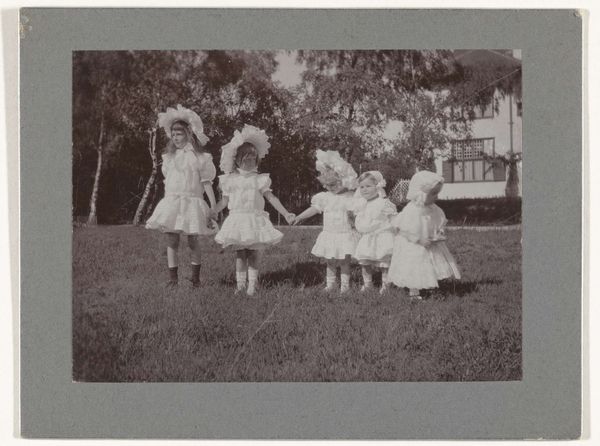
photography, gelatin-silver-print
#
portrait
#
still-life-photography
#
photography
#
historical photography
#
gelatin-silver-print
#
monochrome photography
#
genre-painting
#
realism
#
monochrome
Dimensions: image: 5.3 × 8 cm (2 1/16 × 3 1/8 in.) sheet: 6.3 × 9 cm (2 1/2 × 3 9/16 in.)
Copyright: National Gallery of Art: CC0 1.0
Curator: Immediately I am struck by the geometric harmony and monochromatic scale. It's so visually crisp! Editor: This is an anonymous gelatin-silver print, believed to have been taken circa the 1950s, called "Untitled (Three young women holding hats)." I see echoes of hopeful, post-war domesticity here. Curator: Interesting, "hopeful." For me, the composition is structured around the formal arrangement of these young women in almost identical white dresses, their hats serving as bold, circular counterpoints to the linear backdrop. The tonal range is exquisite. Editor: And their race undoubtedly factors into how their position within this seemingly idyllic image functions as representation. Are they truly subjects, or are they embodying an idea of conformity? Their placement in front of that clapboard house in the background screams ideals of normalcy, and the very real constraints those ideals put on women, specifically women of color. Curator: Setting aside identity and race momentarily, consider the texture. The granular quality of the print lends it a tangible sense of history. There's a stark beauty in its simplicity, right? Editor: That granular texture reminds me that photographic "simplicity" always belies the layers of sociopolitical complexity inherent to the medium. The choice of monochrome eliminates color as a distraction and emphasizes the subtle nuances in the subjects' features, drawing attention to their presence. Curator: True, but that visual reduction is what allows us to consider pure form and how that communicates emotional tone in any picture. Editor: And speaking of the faces, consider how little we are allowed to see of them: downturned eyes, solemn gazes. It's not quite resignation, but more like quiet awareness of expectations of what they should represent in the picture, to those expectations. Their hats, instead of projecting femininity, are held like shields. I read something there about identity and protection. Curator: That's insightful. Maybe my formalism can embrace your perspectives on history. Editor: And perhaps a renewed focus on formal elements would help make historicism that much more accessible to our listeners.
Comments
No comments
Be the first to comment and join the conversation on the ultimate creative platform.
